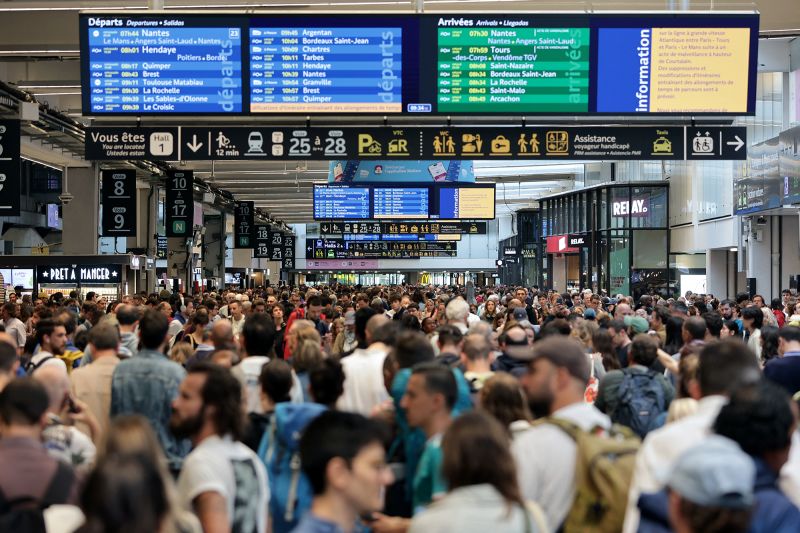The main body of this piece will delve into how the French rail lines were disrupted due to what is believed to be ‘coordinated sabotage’, just a few days before the iconic Paris Olympics opening ceremony. This unprecedented event failed to deter the enthusiasm of the Olympics committee and participants, but certainly cast a shadow on the festivities.
On a mid-summer evening, just before the commencement of the much-awaited Paris Olympics, the French national railway operator, SNCF, fell victim to a massive disruption believed to be caused by deliberate sabotage. This occurrence has been dubbed by local media and train enthusiasts as an act of ‘coordinated sabotage’, given the striking scale and precision with which the operations were carried out.
The sabotage affected multiple sections of the rail network, spanning from the heart of Paris to the distant outskirts. Notable amongst the disrupted lines was the TGV, France’s intercity high-speed rail service, which connects all major French cities and is a vital transport mode for millions of people, including visitors expected to join for the Olympics.
The SNCF recognized the disruptions as strikingly out of the ordinary within hours. It wasn’t the typical breakdown or delay that plagued the lines. Several rail lines were seemingly intentionally affected simultaneously, locating the incidents across multiple geographical locations. The tracks were impaired in a way that safety measures prevented any train journeys until a full inspection and repair were undertaken.
Evidence suggests that the sabotage capitalized on an intimate knowledge of the railway systems. The switchboxes along the rails, a critical part of the track system that helps in directing trains, were noticeably tampered with. In some locations, there was physical damage inflicted on their structures, while in other locations, complex network systems had been disrupted, suggesting an advanced level of technical expertise.
The disruption of the railway system resulted in a colossal travel chaos with delays and cancellations, affecting millions of passengers, including those visiting Paris for the Olympics. With the heightened anticipation surrounding the opening ceremony of the sporting spectacle, athletes, their support staff, media personnel, tourists, and local residents alike found their travel plans thrown into disarray, leading to widespread inconvenience.
Promptly responding to the crisis, the SNCF, with the support of the French government, embarked on an emergency operation to restore the service. Engineering crews were brought in to repair the damaged lines, while railway policing and national law enforcement joined forces to investigate the sabotage incidents.
The disruption, however, did not dilute the spirit of Olympic fraternity. Stadiums and junctions that were previously connected by trains, saw a surge in footfalls as people started to walk the distance. Bicycle renters witnessed a sudden boom as locals and tourists alike switched to alternate modes of transport. Businesses generously extended help by arranging independent tourist buses.
This event indeed succumbed to an unplanned hiccup, adding an unexpected chapter to the otherwise illustrious history of the Paris Olympics. However, it is a testament to the resilience and spirit of unity, that despite the massive disruption, the commitment to the Olympic ideals remained unwavered.




